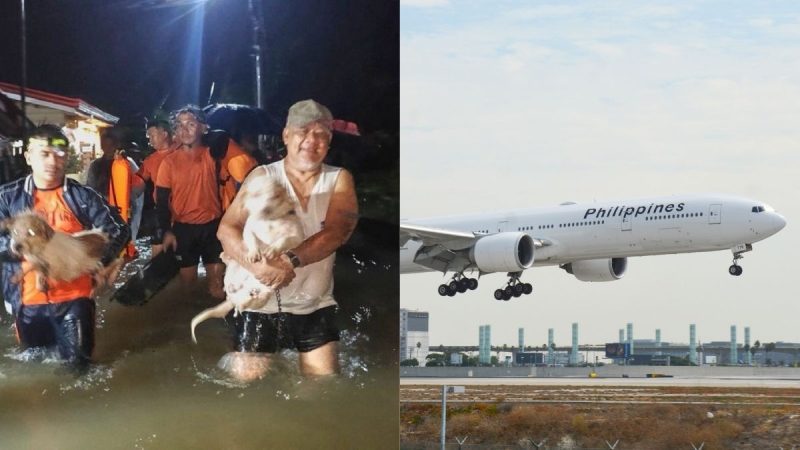The Philippines is once again in the teeth of a storm. Severe Tropical Storm Opong, known internationally as Bualoi, has torn through Luzon and the Visayas with winds hitting 110 km/h, ripping sheets of tin from rooftops, turning roads into rivers, and scattering stranded travellers across airports that suddenly feel like refugee camps.
Severe Tropical Storm Hits Philippines
According to Hindustan Times, the Philippines is grappling with the aftermath of Severe Tropical Storm Opong, which made landfall in San Policarpo, Eastern Samar, on the evening of September 25, 2025. Packing sustained winds of 110 km/h, Opong has caused significant upheaval across the central and eastern regions of the country. At least four fatalities have been reported, with over 433,000 people evacuated to emergency shelters due to flooding, power outages, and landslides.
This storm follows closely on the heels of Super Typhoon Ragasa, which struck earlier in the month. Ragasa, the most powerful tropical cyclone of 2025, made landfall in northern Luzon and subsequently impacted Taiwan, Hong Kong, and southern China, causing at least 25 deaths and widespread damage.
The skies are no safer. AirAsia Philippines was the first to cut its flights, axing Tacloban flights on September 25. Cebu Pacific followed the next day, scrubbing routes, including more Tacloban trips that had no chance of punching through the weather.
Philippine Airlines, faced with the same impossible choice, grounded several of its Luzon and Visayas flights on the 25th, putting safety above schedule.
The ripple effect is worrisome. Families sleeping on plastic benches, kids glued to storm warnings flashing red across departure boards, tired passengers queuing endlessly for refunds or travel credits that feel like scraps in the middle of an unravelling day. Social media is flooded with shaky videos of crowded terminals where people drift between panic and boredom.
Also Read: American Airlines Boeing 737 Aborts Takeoff At Denver After Tyre Catches Fire; 173 Evacuated Safely
Passenger Struggles: Stranded Travellers And Cancelled Airlines
Outside the airports, the shutdown is just as stark. Metro Manila, wide stretches of Luzon, and huge parts of the Visayas have suspended classes and work. The roads, where they aren’t underwater, are blocked by downed power lines and trees, Hindustan Times reported. Travel is more than difficult; it’s dangerous, and officials are asking people to stay put and to stop risking themselves for trips that can wait.
For those stuck mid-journey, the following precautions have been advised:
- Keep refreshing airline apps and websites;
- Grab rebookings or credits while they last
- Assume even an operating flight could end in hours-long delays, and if local officials tell you to evacuate, comply immediately.
But this isn’t a one-off disaster. Opong comes barely a week after Super Typhoon Ragasa hammered the north, killing nine and displacing thousands. Two storms in quick succession remind Filipinos of what they already know: this country lives under a permanent threat, twenty cyclones a year on average, each one ready to wreck lives and routines overnight.
So passengers in Manila, Cebu, Tacloban, and beyond scroll through airline feeds, wait for the Civil Aviation Authority’s updates, and watch the storm batter a nation that has learnt, painfully, how fragile normal life can be when the wind decides to turn.
Cover Image Courtesy: stevelessner/X and nexttripnetwork/Wikipedia
For more such snackable content, interesting discoveries and the latest updates on food, travel and experiences in your city, download the Curly Tales App. Download HERE.
